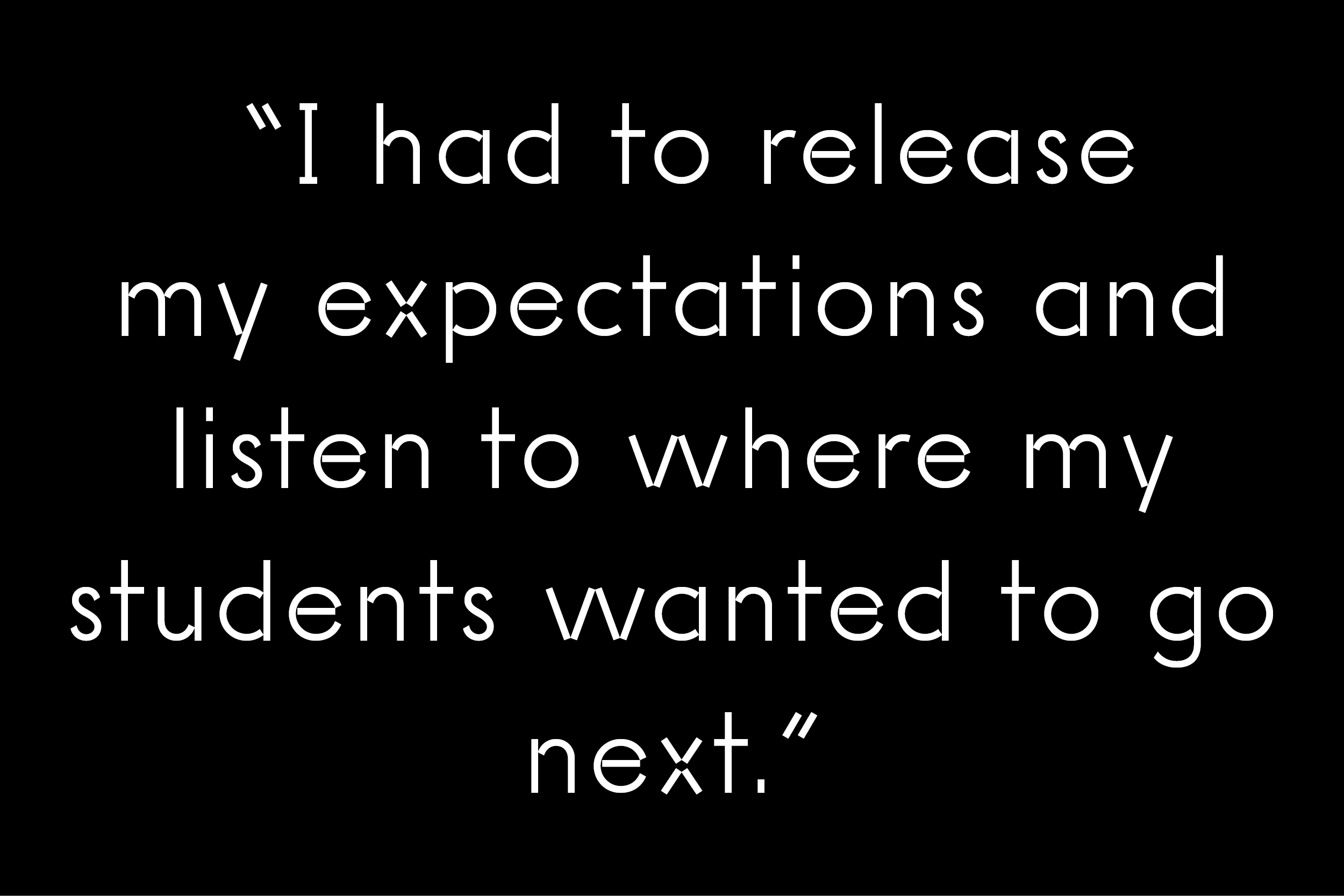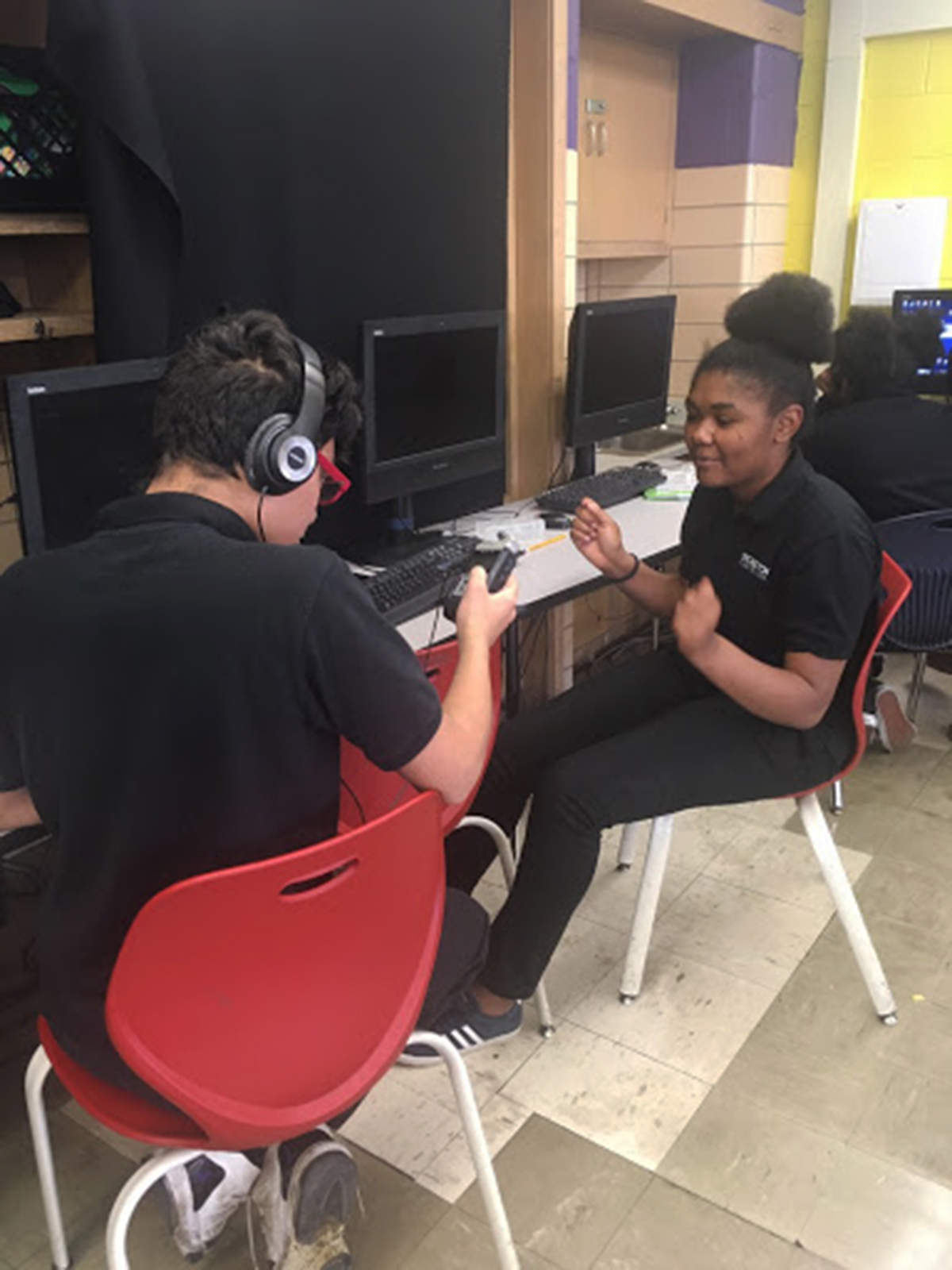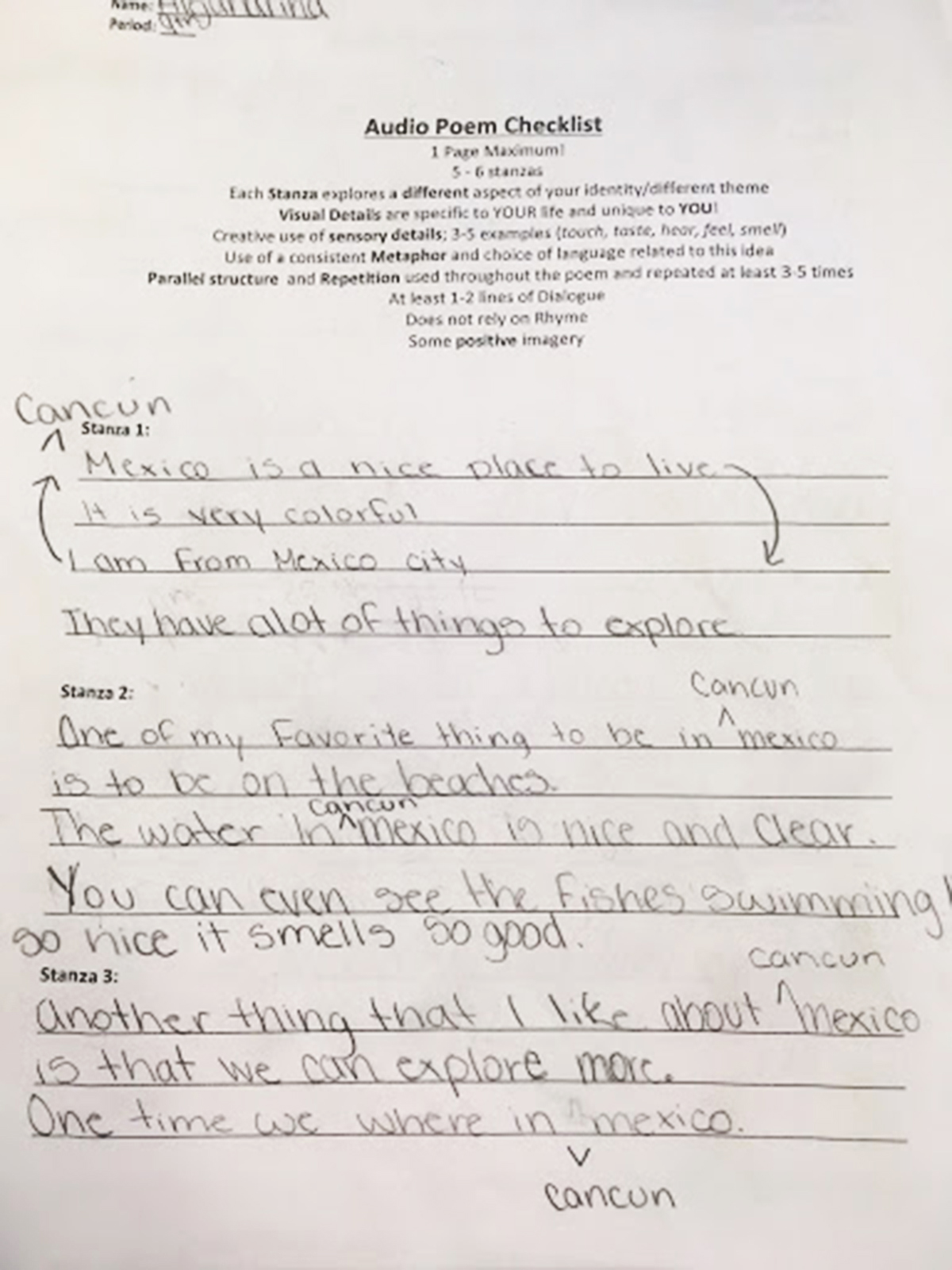
Dear Future Educators,
I began this project thinking about the concept of belonging and what it means to be a part of something—a group, a place, a family. I wanted to explore this topic in a way such that students could begin to identify the spaces in which they had the feeling of being at “home.” This home did not have to be a literal home, but a place where students felt most connected. I wanted them to think on a spectrum, from a global perspective down to the local and individual level. This project was the first time in my teaching practice where I stepped out of my comfort zone, thinking about the technical aspects of media-making with an end product in mind of a more open-ended, conceptual way of thinking. **It was challenging to let go of my expectations of where I wanted the project to end up and allow the students to guide the process. Letting go of this control was scary and also liberating.** ###Process Throughout this process, my students taught me to be humble. When they were not on board with the direction of the project, they let me know. When we began, I had envisioned students taking inventories of their homes, finding and collecting objects or videotaped interviews and photographs of their family members. As we started our activities, students had fun mapping out their homes and learning about other students who lived in their neighborhoods, and I planned for them to build websites based on this information, using an example I constructed using my own home life. **I wanted to eventually curate an exhibit where we displayed all of their artifacts as a collective representation of what home means to my students. I asked them to think of all the smells, sounds, sights, textures that surrounded them . . . and I was met with a complete refusal to follow this lead. ** However, talking about home life is a sensitive topic for some students, and our classroom was not a place where they felt safe enough to share their personal stories. They seemed genuinely confused as to “why we were focused on this topic in digital media class.” I had to release my expectations for the project and listen to where my students wanted to go next. It was clear that my students were eager to get their hands on technology. After all, this was a digital media class. That is when I introduced the zoom audio recorders. As an icebreaker, I gave each student some question prompts (What are you most proud of? What are your fears? What is the best advice you were ever given?). To my surprise, the entire class was engaged in conducting interviews with each other. They were opening up to tell their stories. That’s when my perspective on this project shifted: **What if telling personal stories was the foundation of what made students feel at home?** With storytelling in mind, I drafted templates for students and taught them about using stanzas, parallel structure, and repetition to enhance their writing. I imagined every student needed these sorts of guidelines to get started on writing their personal stories. Yet again, I was struck by how many students went in their own direction and free-formed drafts of their personal stories around different themes of home, change, and loss of loved ones. ###Conclusion Looking back at how this project began, I realize I had too narrow of an idea of the scope of this project. I was approaching my driving questions (How do you define home? What gives you a sense of shared belonging?) from a literal standpoint that was too restrictive. **It was my students who expanded my limited viewpoint to encapsulate a larger idea of what it means to belong somewhere. I learned to be comfortable enough in my teaching practice to scrap ideas and activities that don’t serve a greater purpose, and to empower students to determine the outcomes of their own learning.** It was through the act of telling personal stories that my classes began to make space for vulnerability and provided each other with a sense of safety that wasn’t present prior to this project. As students took turns recording each other’s narratives, I believe they learned more about one another, and therefore found a deeper connection with their classmates. It’s not clear where we go from here, but one thing is certain: We now have a platform to reveal our inner-most thoughts and feelings. In doing this project, students found a home in each other. —Larissa

INTERVIEW ICEBREAKER
Invite students to interview one another with some standard question prompts like “What are you most proud of? What are your fears? What is the best advice you were ever given?” Give them the chance to tell their stories. If you have access to the appropriate technology, provide recorders so that they can revisit their stories as inspiration for future artmaking.
Larissa Nikola-Lisa
Chicago Technical Academy High School
Larissa Nikola-Lisa is a Chicago-based teaching-artist who is passionate about engaging urban youth in filmmaking because she believes in the power of visual storytelling to encourage positive risk-taking, collaboration and creative expression. Larissa has mentored teens in the production of award-winning documentary films. Prior to being a Media Arts educator, she served as an Associate Producer for broadcast television series on PBS, The Food Network and the History Channel. She earned a Master’s degree in Visual Media Arts from Emerson College and a Bachelor degree in Elementary Education from the University of Wisconsin-Madison.